Shelby Houlihan Maintains She Didn’t Cheat. Are Anti-Doping Tests Really Snaring Innocent Athletes?
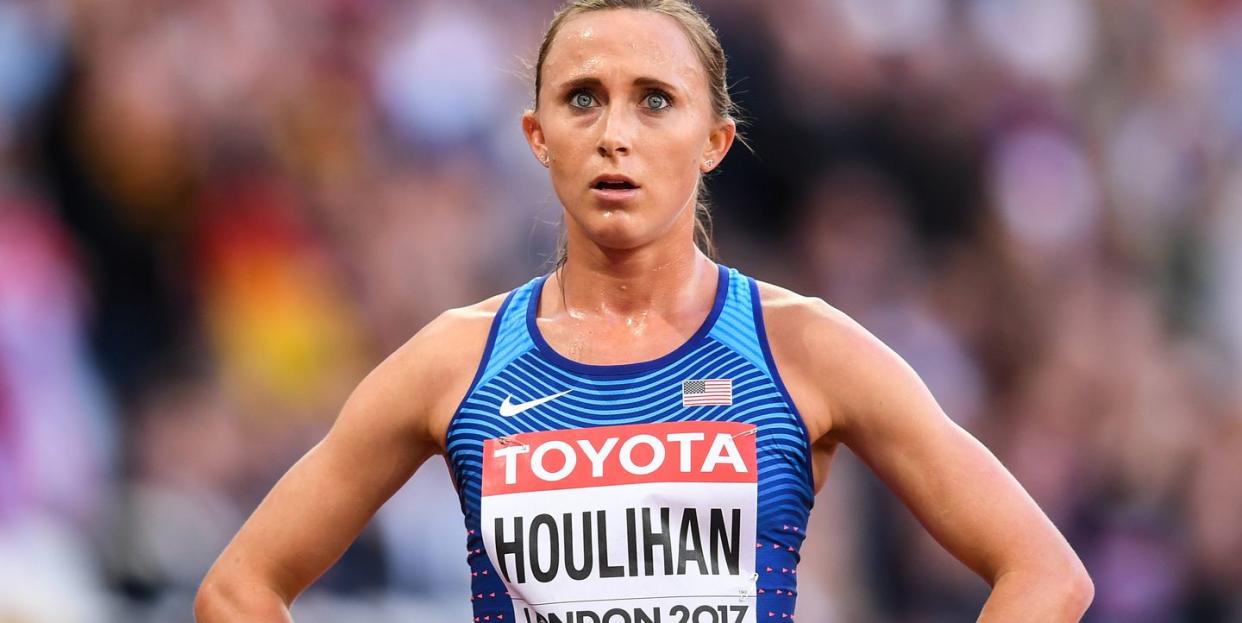
- Oops!Something went wrong.Please try again later.
The 2021 season had just begun and professional runner Shelby Houlihan had big plans. As the reigning American record holder in the 1500- and 5000-meter track events, she was looking forward to the upcoming Olympic Track & Field Trials and the fruition of a lifelong dream: a medal at the Summer Games.
On January 14, 2021, while out for brunch in Flagstaff, Arizona, Houlihan received an email from the Athletics Integrity Unit (AIU), an independent anti-doping agency based in Monaco that had given her an out-of-competition urine test in December. The language in the message was hard for her to decipher on her phone, but what was clear was the fact that she had failed the drug test and was being provisionally suspended from her sport.
Houlihan had tested positive for a metabolite of the hormone nandrolone, a banned muscle-strengthening steroid frequently found by doping authorities, but a substance Houlihan says she had never heard of. Metabolites are made or used when the body breaks down food, drugs, and other chemicals. Anti-doping drug tests scan for the known metabolites of certain illegal substances such as nandrolone, a hormone similar in chemical structure and performance-enhancing benefits to testosterone. (The metabolite in Houlihan’s sample was 19-norandrosterone, or 19-NA.) The World Anti-Doping Agency, or WADA—which maintains what it calls its Prohibited List and passes down the procedural rules of testing—has banned nandrolone as an anabolic androgenic steroid for more than 40 years. (Of the 278,047 samples collected in 2019—the most recent data available not affected by the pandemic—2,701 samples, or 2 percent, were reported as Adverse Analytical Findings with 10 positive findings of nandrolone.)
Houlihan told me she’s always been a staunch anti-doping advocate who sees her sport as a way to challenge herself—not an exercise in cutting corners in an effort to win at all costs. “I have no interest in taking shortcuts. I don’t know how people cheat and feel like they deserve the things that they accomplish,” she recently said in a podcast interview. “I will never understand that. That’s not who I am.”
Regardless, she now finds herself at the center of an ongoing debate at the highest level of international sport about whether anti-doping agencies have run afoul of the athletes they are tasked with protecting. After decades of ever more sophisticated cheaters beating the tests, world anti-doping authorities now find themselves with the ability to inspect samples down to one-trillionth of a fine grain of sand. But are they too far out in front of the science when it comes to understanding what, exactly, they are finding?
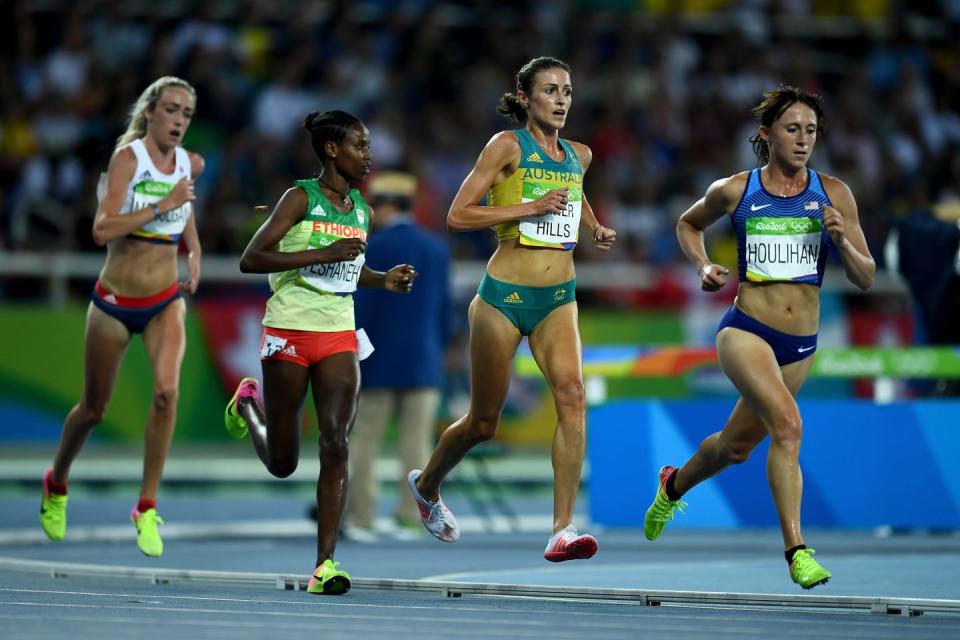
Since drug testing began, at the 1968 Summer Olympics, athletes who tested positive have offered a gamut of excuses around contamination that ranged from sexual contact to eating a family-recipe pigeon pie. But it wasn’t until a recent spate of high-profile cases resulted in exoneration that excuses once considered preposterous began to seem plausible.
In the fight for clean sport, the phenomenon of positive test results produced by innocent sources has created an existential crisis. Anti-doping agencies are aware of the possible risks to clean athletes in the age of more sensitive testing protocols and have begun to adjust. The United States Anti-Doping Agency (USADA), which did not handle the Houlihan case, is widely seen as taking great care around these situations, working with athletes toward verifying where the offending substance originated.
Travis Tygart, CEO of USADA, told me he’s extremely frustrated with what he calls “cracks in the system,” but he points to recent rule changes affecting some substances known to be problematic. On May 20, 2021, WADA announced new investigative steps for potential contamination cases related to meat. Among them were new, higher minimum reporting levels for certain growth promoters and diuretics such as clenbuterol, ractopamine, zilpaterol, and zeranol. Levels at or below 5 ng/mL (nanograms per milliliter) are now recorded on test results as atypical instead of adverse. Absent from the list, however, is nandrolone.

After the thrust of the email sank in, Houlihan, a Nike-sponsored professional athlete, called her coach, Jerry Schumacher. “It took me a few minutes to even get it out because I was extremely upset,” she told me. “We were both, like, ‘This has to be a mistake.’” Schumacher reached out to a prominent sports lawyer, Paul J. Greene, who had previously won all 14 of his contamination cases.
The team devised a plan. Houlihan maintains that she’s never knowingly taken any performance-enhancing drugs (PEDs), so they made a food log by scouring her text messages and receipts. Her iPhone location data helped them determine what they thought was a possible explanation. Since nandrolone can be found in certain cuts of meat from male pigs, they zeroed in on a carne asada burrito she said she ate the evening before her doping control test on December 15, 2020. Maybe she was served pig meat instead of strip steak, they hypothesized. It was a memorable night, because Houlihan had gathered with her girlfriends for what was becoming a Monday tradition, a watch party for the TV series The Bachelorette, and she remembered the burritos being so greasy that they didn’t finish them. “The best possible explanation was this food truck where I had eaten,” Houlihan told me, “literally 10 hours before the test.”
Five days after the AIU notification, Greene informed the agency of the tainted burrito hypothesis. The team requested that Houlihan’s B sample be tested, and they hoped the AIU would follow a suggestion in the WADA guidelines to perform further ancillary testing on the samples. (This, they thought, would prove that the 19-NA was of an endogenous source, consistent with eating and not injecting the drug.)
To bolster Houlihan’s case, the team returned to the same food truck, bought burritos, and sent them off for testing. She drove the four hours from her team’s training camp in Flagstaff to Phoenix where she had eight inches of her hair cut and mailed to France for additional analysis. (Evidence of certain drugs can remain in human hair longer than in blood or urine.) She then visited a prominent polygraph administrator and sat for a lie detector test. And she took her frustrations to the track. “I didn’t miss a beat,” she told me. “I didn’t take a day off. I just kept working hard.” With the Olympic Trials on the horizon, she got in the best shape of her life, running up to 90 miles a week, as she tried to remain hopeful that she’d be exonerated.

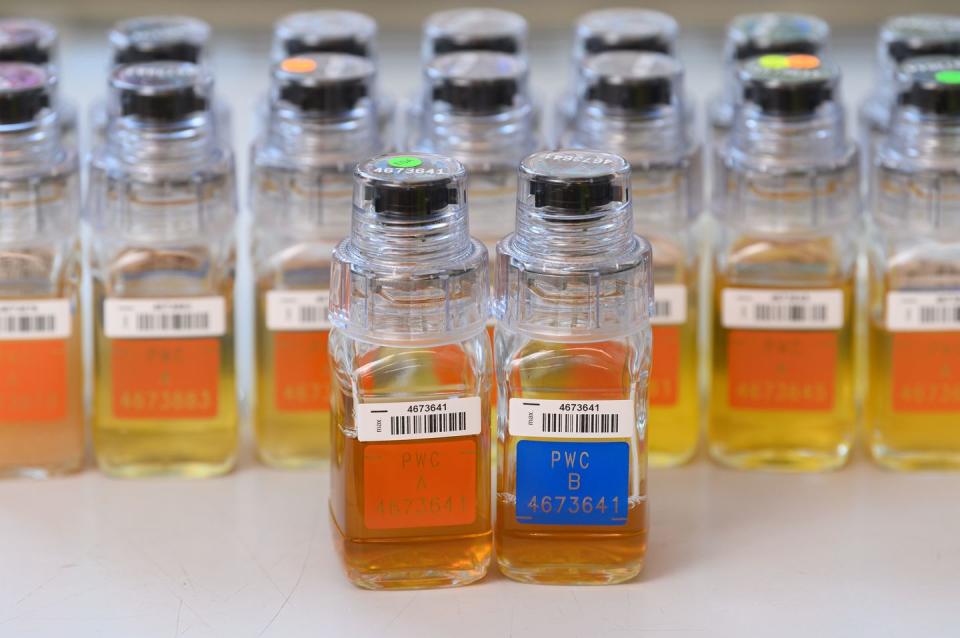
Professional track and field athletes can have their blood or urine tested at any time. Once they enter the WADA Registered Testing Pool—which includes roughly the 500 top track and field athletes in the world—they are required to update their whereabouts at all times and provide a daily one-hour time slot in their identified location where they’ll be available for surprise testing. Successful athletes are tested more often than the rest of the field. Athletes who have previously provided an irregular sample that didn’t quite reach the bar for a failed test are then targeted for more frequent testing. It’s unknown if Houlihan had prior irregular samples.
When a doping control officer shows up, they must keep the athlete in sight so they can’t prepare to cheat the test. (This has happened; google“Whizzinator.”) Then the officer is required to watch the athlete urinate. Once the urine (and, less often, blood) is collected, it’s split into an A and a B sample by the control officer, while the athlete observes. The sample is then sealed and labeled with an identification number (never an athlete’s name) and sent to a certified drug testing lab. Whoever tests the sample has no way of knowing the identity of the athlete.
If the A sample is positive, the results and identification number are sent back to the testing agency; the athlete is then notified and given a choice to accept or deny the charge. If they deny, they can request that the B sample be tested. If the B sample is found clean, the athlete is off the hook and the public will never hear of the incident. If it’s found to have the same banned substance in it, the athlete is charged with a violation.
“The system is built to always, always maintain the integrity of the athlete,” says Olivier Rabin, PhD, WADA’s senior director of science and medicine. “We are super strict when we analyze the samples. Three independent tests on the samples are conducted before the results are finalized. That is why so few cases are eligible for reduction of sanction, because the system is so strong.”
Once an athlete has an Adverse Analytical Finding—regardless of the circumstance—they are considered guilty of a drug offense. From this point on, the burden of proof moves from the anti-doping agency to the athlete. Unlike in our American penal system, where the accusing party must prove the defendant’s guilt beyond a reasonable doubt, anti-doping cases follow the principle of strict liability. That means the responsibility shifts to the athlete who, if they hope to be absolved, has to prove that the substance was ingested accidentally.
The timeline of testing to results and notification in doping cases is notoriously slow. And if months have passed, a clean athlete has a harder time proving that something they ate was an inadvertent vessel for PEDs. But professional runners are responsible for what goes into their bodies at all times.
To fight a doping charge, an athlete must first take their case to a World Athletics Disciplinary Tribunal. If they fail there, typically their last option is to argue their innocence to the Switzerland-based Court of Arbitration for Sport (CAS). As we’ve seen, athletes—both guilty and innocent—usually contest their charges, especially if they have the financial wherewithal to afford the lawyers, testers, polygraph administrators, and scientific experts.
For Houlihan, there wasn’t time for these processes to run their course if she was to be exonerated in time for the U.S. Olympic Trials in June. The AIU had taken four months to officially charge her, which she says forced her to agree to skip the initial tribunal and move right to the final step, a binding arbitration with CAS which would likely hand down a four-year ban. Her team would bet her career, reputation, and livelihood on an argument balanced on the probability that she chose the wrong dinner.

Athletes have always sought out every advantage in competition. The oldest doping story from the modern Olympic age comes from the marathon at the 1904 Games in St. Louis. There, U.S. athlete Tom Hicks won the gold after his coach revived the faltering runner with a cocktail of brandy, egg white, and strychnine (now a banned stimulant) at mile 22.
At the time, sports were generally seen as amateur, working-class endeavors. Taking drugs to enhance one’s ability to get through a grueling event—like the Tour de France or a marathon—was seen as part of the job.
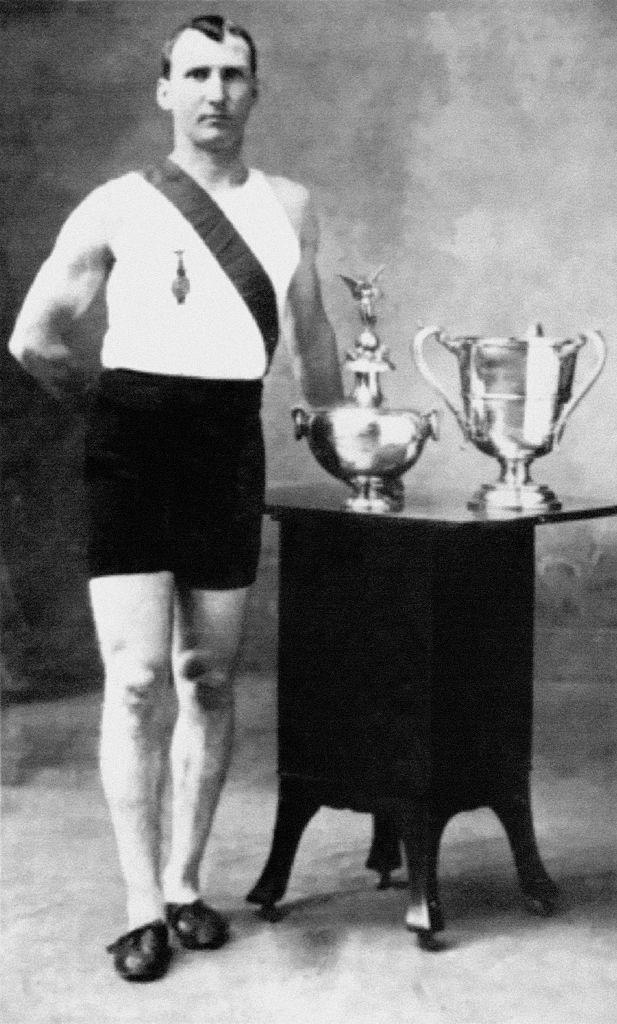
The first anti-drug regulation in sport came in 1928, at the annual convention of World Athletics (then called International Association of Athletics Federations), but without testing technology there was no way to catch drug cheats. In the second half of the 20th century, as sentiments around drug use were shifting—spurred largely by Soviet and East German Olympic dominance—anecdote and accident gave anti-doping advocates all the ammunition they needed to drive their efforts forward.
The first gold medal winner to fail a doping test was Canadian sprinter Ben Johnson at the 1988 Games. After a record 9.79-second 100-meter sprint, which wouldn’t be matched for another 11 years, his sample came back positive for the anabolic steroid stanozolol. His manager claimed (to no avail) that someone spiked Johnson’s water bottle. He was stripped of the medal.
“At the time, anti-doping was in more of a reactive mode than a proactive mode,” says WADA’s Rabin. “The driving force [for a more robust system, including testing] was a fear of athletes dying during sports events.”
In 1998, after French police discovered a significant cache of illegal performance-enhancing drugs in a Tour de France team car, sports organizations realized that they had to do something about the growing problem. WADA was then formed as an independent international organization in the effort to promote, coordinate, and monitor the fight against doping in sport.
When American sweetheart, world-beating sprinter, and Nike athlete Marion Jones admitted in 2007 to using steroids, the public began to understand just how pervasive illicit drug use in athletics had become. Although Jones was never charged with a performance-enhancing drug offense, investigators learned that she was getting PEDs from the same source used by several Major League Baseball players, the Bay Area Laboratory Co-operative (BALCO). Her case proved that cheating had progressed to the point where chemists were making designer steroids undetectable to drug tests.
In 2013, Lance Armstrong drove that point home as he told some of the truth in an interview with Oprah Winfrey. According to a USADA report, through the early aughts Armstrong and his teammates had been running “the most sophisticated, professionalized and successful doping program the sport has ever seen.” Armstrong often used drug testing itself as a shield, claiming that he was tested so often he must be clean or he would have gotten caught. He was also one of the first, and certainly the most prominent, to publicly disparage the anti-doping agencies, saying they were targeting him because they needed a high-profile athlete in their trophy case to justify their jobs and their funding. What was clear was that drug testing was not sensitive or technologically advanced enough to catch well-funded cheaters determined to evade anti-doping authorities.
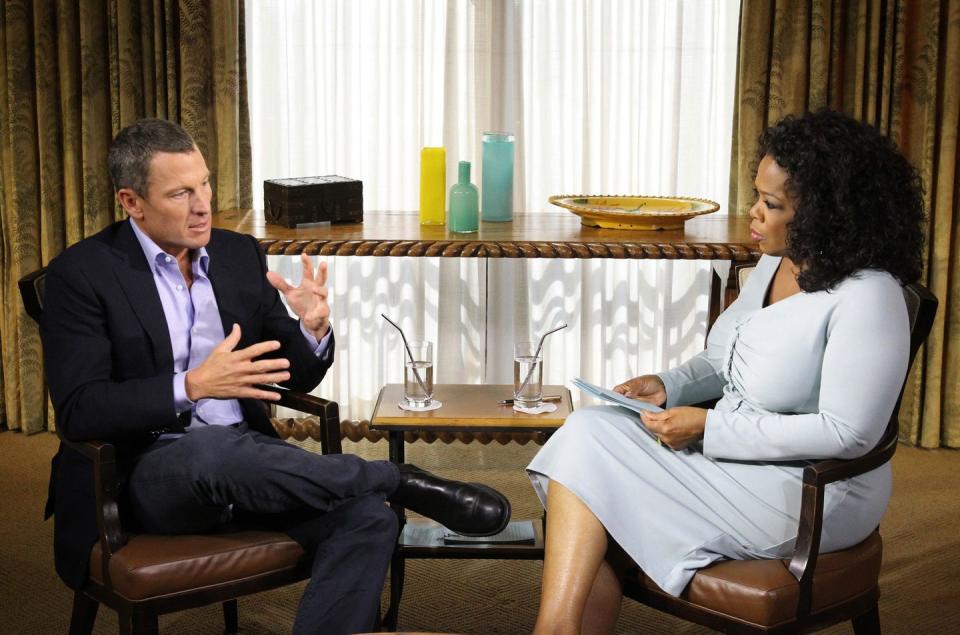
As testing improved and Armstrong took his pyrotechnic fall from grace, some athletes and their coaches turned to doctors’ offices, seeking help from physicians who plumbed lists of allowed medications for anything that might endow an off-label benefit to athletic performance.
As evidence of advanced doping began to hit the headlines in 2013—most notably in a Wall Street Journal story titled“U.S. Track’s Unconventional Physician”—Nike’s highest-profile coach, the Nike Oregon Project’s Alberto Salazar, and his team physician, Dr. Jeffrey Brown, came under greater scrutiny. A 2015 investigation by the BBC and ProPublica followed with allegations by former Oregon Project employees and athletes of Salazar experimenting with testosterone and pressuring athletes to take unnecessary prescription drugs to boost performance. (Brown was not mentioned in the story.) Both men were eventually banned from sport by USADA for four years in 2019—Brown for administration of a prohibited method, and Salazar for administration of a prohibited method, trafficking in testosterone, and tampering with the anti-doping process.
In a statement on the now-defunct Nike Oregon Project website, Salazar responded to the ban saying, “I am shocked by the outcome today. Throughout this six-year investigation my athletes and I have endured unjust, unethical and highly damaging treatment from USADA.” (In 2021, Salazar was also banned from sport for life by the U.S. Center for SafeSport for “sexual misconduct” and emotional misconduct for his treatment of women on the team.)
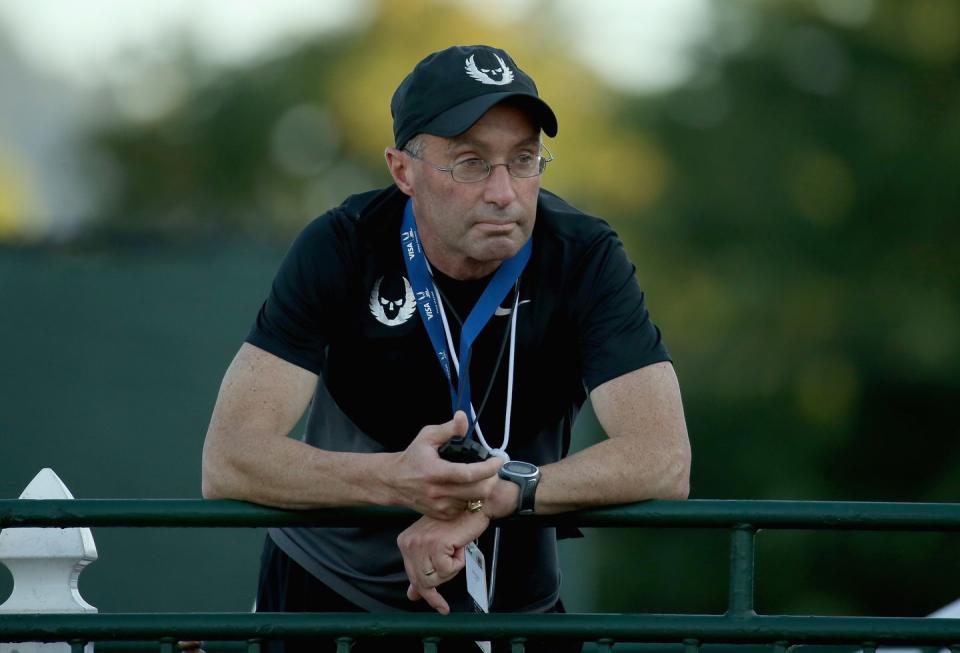
It was against this background that Houlihan’s running team, the Nike-sponsored Bowerman Track Club (BTC), operated on the brand’s plush corporate campus in Beaverton, Oregon. After Salazar survived a heart attack in 2007, he hired Jerry Schumacher as his eventual Oregon Project replacement. But the two coaches clashed and Nike allowed Schumacher to leave and helm his own team, the BTC, while Salazar continued on with his Oregon Project.
Schumacher’s athletes described him as someone who doesn’t chase scientifically suspect chemicals or techniques and instead sticks to the basics of good hard training followed by appropriate rest. And unlike Salazar, they say Schumacher doesn’t entangle himself in his athletes’ medical appointments or advise them on which prescription drugs to seek out.
“I am vehemently against doping. I would support lifetime bans,” Schumacher told me. “I’ve had too many athletes that have been robbed by cheaters.”

As tests have become more sensitive, now regularly measuring down to the picogram (one-trillionth of a gram), cases involving contamination through sex, meat, and medication have resulted in no-fault findings by authorities. This is ostensibly good for the fight against doping, but the increase in sensitivity comes with inherent risk to clean athletes. The research on all the possible permutations of these situations and substances has not progressed as fast as the technology.
In the summer of 2019, Australian Olympic swimmer Shayna Jack tested positive for the banned anabolic agent ligandrol. She took her case to CAS and was able to successfully convince the arbitration panel that the ingestion was inadvertent, which afforded her a reduction of her ban from four years to two years.
Cyclist Carl Grove of Bristol, Indiana, lost an age-group velodrome world record due to, he believes, something he ate the night before the race in 2018. USADA agreed, stating that his failed test for epitrenbolone, a steroid metabolite, was “more likely than not caused by contaminated meat consumed the evening before competing.” Instead of a ban from sports, he was issued a public warning. Regardless, because he competed with a banned substance in his system, Grove was disqualified from the event and stripped of his world record performance.
Professional runners have been through their own personal nightmares with similar situations. Olympic middle-distance runner Brenda Martinez, for example, tested positive in 2020 for a banned diuretic that was later found in her legitimately prescribed medication. Subsequent testing of her leftover pills proved she had inadvertently taken the substance, and all charges were dropped.
Ajeé Wilson after setting a new American 800-meter record at the NYRR Millrose Games in February 2017, tested positive for the anabolic agent zeranol. (Zeranol is known to be used in the growth promotion of cattle.) USADA consulted experts on zeranol’s presence in food and reviewed evidence from Wilson on her diet. The reviewers also considered that Wilson had tested negative a week before and that her lab results showed relatively low concentrations. Ultimately, USADA determined that the substance was “ingested by her without fault or negligence,” and that she would not face a ban. Still, Wilson had to forfeit her results and prize money from the Millrose Games.


Because of the one-year delay of the 2020 Olympics due to the pandemic, Houlihan’s four-year ban will put her out of contention to run in the 2024 Paris Olympics as well. She’s 29 years old, and a ban from sport could potentially be the end of her professional running career. If she said that she had doped, she could have received a one-year reduction in the four-year sanction—commonly given for admitting a violation and accepting the sentence—which would have allowed her to run in the next Games.
Houlihan chose instead to stand behind her assertion that she is a clean athlete, and she lost her CAS trial in June 2021. In an effort to get ahead of the official news of her sanction, her team preemptively announced the ban in a press conference over Zoom on June 14, which would later be posted to YouTube. The presentation was convincing.
Schumacher declared his confidence that Houlihan was innocent and condemned the anti-doping authorities, who he said do not deserve their power. “What we are witnessing here is a great tragedy in the history of American distance running,” he said. Adding that Houlihan “just might be the best 1500-meter runner in the world this year, but we will never get the opportunity to find out. And that’s a tragedy… Shame on you.”

The Athletics Integrity Unit, established in 2017 by World Athletics, is tasked with policing “any form of integrity breaches in track and field sports, such as doping, betting, bribery and corruption, age manipulation, manipulation of competition results, and harassment, including sexual harassment.” Many nations that have dominated running for decades had no domestic testing organizations of their own, which meant their athletes were tested far less than, say, U.S. athletes. The AIU operates as an international anti-doping agency focused on testing the top 10 athletes in each discipline, regardless of what country they are from.
The AIU’s 44-page explanation of findings from Houlihan’s CAS case was released on September 7, 2021. Its team of experts dissected the burrito defense with forensic precision and found that the hypothesis, as the CAS report had noted, “presupposes a cascade of factual and scientific improbabilities, which means that its composite probability is (very) close to zero.” And although Houlihan’s team argued that there “is no doping scenario that could explain this one-time presence of 19-NA in her urine sample,” the AIU argued that her samples were “entirely consistent with the use of oral nandrolone (prohormones) that are known to exist on the market.”
Nandrolone is not found in beef, chicken, or lamb; it is a specific hormone and pheromone produced by boars—male pigs. The AIU employed John J. McGlone, Ph.D., a professor at Texas Tech University who studies swine, animal welfare, and animal behavior, to serve as an expert witness. McGlone told me that he personally called both Smithfield and Tyson, the meat suppliers for the food truck where Houlihan had eaten. Not much boar meat is consumed in America, and neither Smithfield nor Tyson sell it. Therefore, in his estimation, there was about a 1 in 5,000,000 chance that boar would have gotten into the burrito that Houlihan alleges caused her failed drug test. “Even if it did, it wouldn’t have given her that isotope ratio,” McGlone says. “Maybe she didn’t knowingly do it, but I doubt it. You don’t get that kind of steroid in your system by accident.”
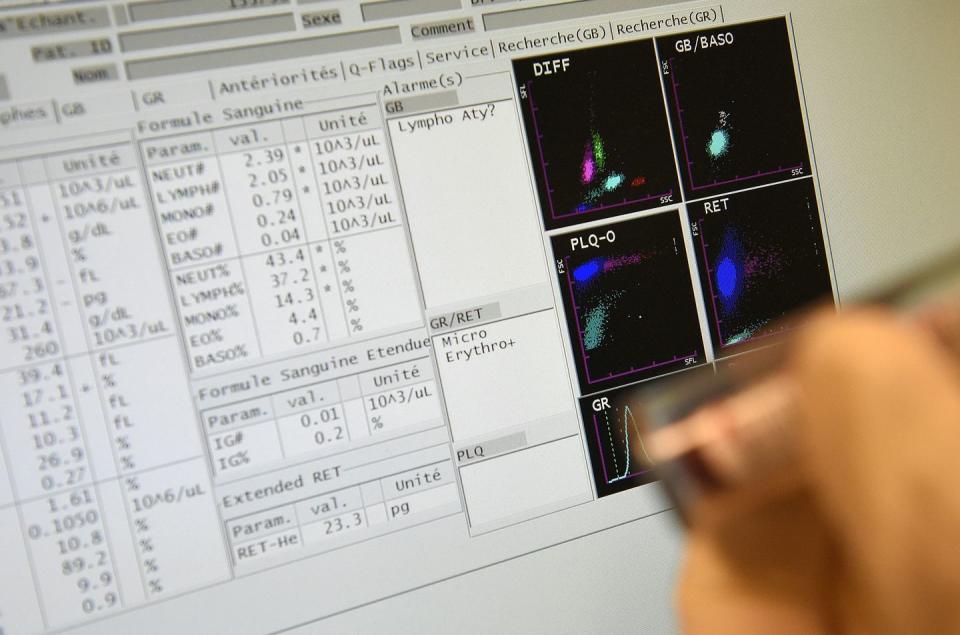
The carbon isotope ratio McGlone refers to is a well-established tool for assessing origins of substances. It’s basically a chemical signature. Pigs raised for consumption in America eat a largely corn-based diet, which typically leaves a ratio of around -18.5 to -21% ng/mL. Houlihan’s carbon isotopic signatures of 19-NA were -23%, which McGlone says indicates that it couldn’t have originated from U.S. commercial pork
This case hinges on whether boar meat with an abnormal isotope ratio entered a distribution system that does not typically carry it. Houlihan’s team argues that both of these scenarios could have been caused by disruptions to the American meat supply system caused by the pandemic.
Professor Christiane Ayotte, director of the WADA-accredited doping control lab at the Institut National de la Recherche Scientifique in Laval, Quebec, where Houlihan’s urine was analyzed, testified that in studies—including her own research—on NA-19 urinary concentration levels after consumption of uncastrated boar, the highest recorded reading was 2.4 ng/mL. This came from one person who consumed about 10 ounces of the meat from older boars selected for the purpose of excreting higher NA-19 levels. After adjusting for specific gravity, Houlihan’s A sample was 6.9 ng/mL and her B sample was 7.8 ng/mL. Ayotte added that the NA-19 content of Houlihan’s sample was more than double that of the most favorable (to her case) findings on boar meat, despite the athlete’s claim that she’d consumed half the amount of meat.
Houlihan had also claimed that her positive test registered such a small amount of nandrolone that it wouldn’t have provided any performance enhancement. The AIU disagreed: “Just to be clear regarding the Houlihan case, this case did not involve trace amounts,” says Julie Burley, the AIU’s communications manager, “and has nothing to do with laboratory sensitivity.” The AIU also points to data that it believes shows the system working as intended: Over the past five years, the agency has adjudicated 18 cases involving possible contamination from meat, with 13 of them resulting in no violation.


Houlihan’s team was unable to convince the panel that she ingested nandrolone from a burrito. And despite her other evidence—the lie detector test she passed, the clean hair sample that showed no history of injecting the drug, and her character witnesses—and despite the three-judge CAS panel that deemed Houlihan a credible witness, the AIU findings and four-year suspension were upheld.
When I spoke to Houlihan after the CAS results were released, she maintained her innocence. I asked if it could have been one of her supplements, and we walked through what she typically takes: a multivitamin, vitamins D and B complex, and, when she’s training at altitude, an iron pill. But she told me they’d ruled out supplement contamination early, after sending the leftovers and some new bottles of the same products to the anti-doping lab in Salt Lake City for testing. They all came back clean. “For what we knew, that pig offal has high concentrations of nandrolone, and it can be highest in your system 10 hours after eating it. I still think it’s the most likely possibility. I don’t know what else to point to.”
Houlihan had one last opportunity to appeal her case before the Swiss Federal Tribunal. Her team needed to show that her case was handled incorrectly and went against one or more of a limited set of public policy issues involving Swiss law. But on May 18, Houlihan announced in an Instagram post that she had lost her appeal and the ban would be upheld. She went on to call the anti-doping system flawed and broken, and said she believed there are “other innocent athletes who have, and will continue to be, affected by this system.”
Despite the finality of Houlihan’s lost last appeal, it is yet another doping case without a satisfying or irrefutable conclusion. Banned athletes claiming innocence can always raise a doubt—whether reasonable or not—and bank on the goodwill of remaining fans to help defend their side of the story. It’s unsettling, as evidenced by several of Houlihan’s now-former teammates leaving BTC after she continued training with the group while banned. (She has since started training solo.) Canadian Olympian Gabriela DeBues-Stafford even specifically cited Houlihan’s presence in her reason for departing. But perhaps the unease that comes with banning beloved athletes who claim innocence is the price to pay for an anti-doping program so advanced and precise that the cheaters, who are so sure of their methods, can never quite believe it when they’re caught.
You Might Also Like

